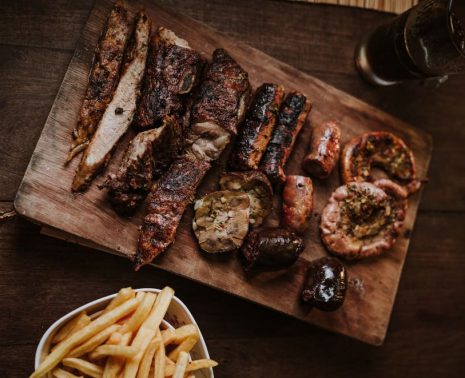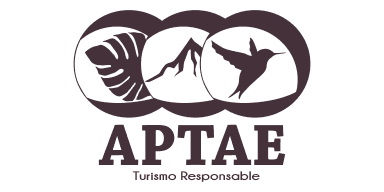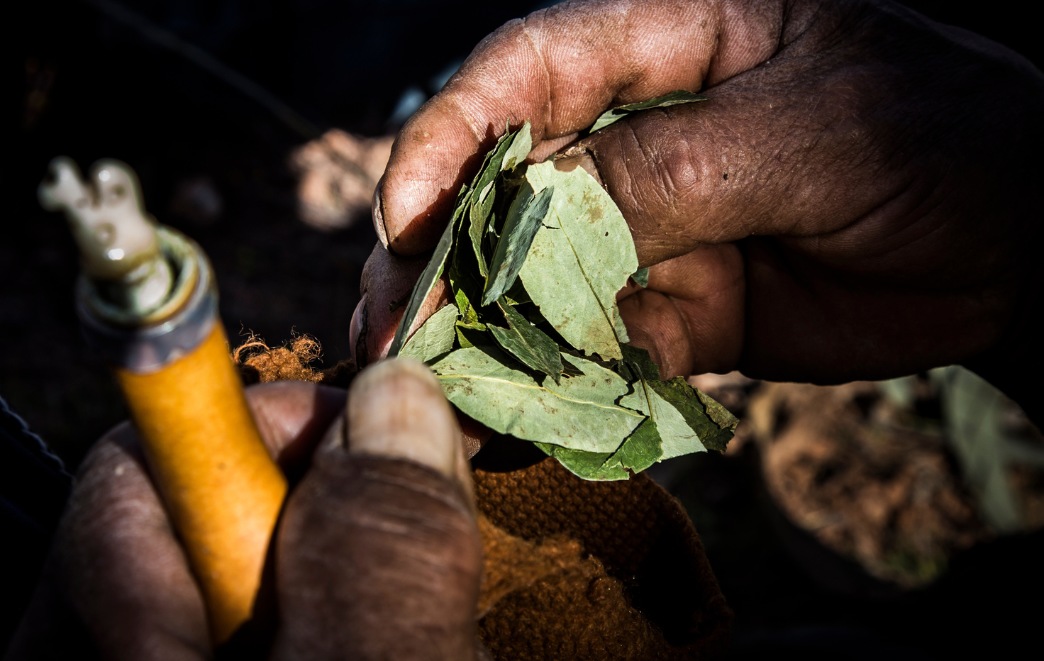
Coca has been a fundamental part of the religious cosmology of the Andean peoples of Peru, Bolivia, Colombia, Ecuador, and northern Argentina and Chile from the pre-Inca period and is heavily present in today’s society as well. Coca leaves play a crucial part in offerings to the Apus (mountains), Inti (the sun), and the Pachamama (the earth). They are also often read in a form of divination analogous to the reading of tealeaves in other cultures. The coca plant contains essential minerals (calcium, potassium, and phosphorus), vitamins (B1, B2, C, and E) and nutrients, such as protein and fiber.
Considering the long history, benefits and uses of the Coca leaf, in this article we will try to investigate the real meaning of the Coca leaf and to refute the widespread international misconceptions that have arisen due to the processing for its illegal use.
Practices & Traditional Usage
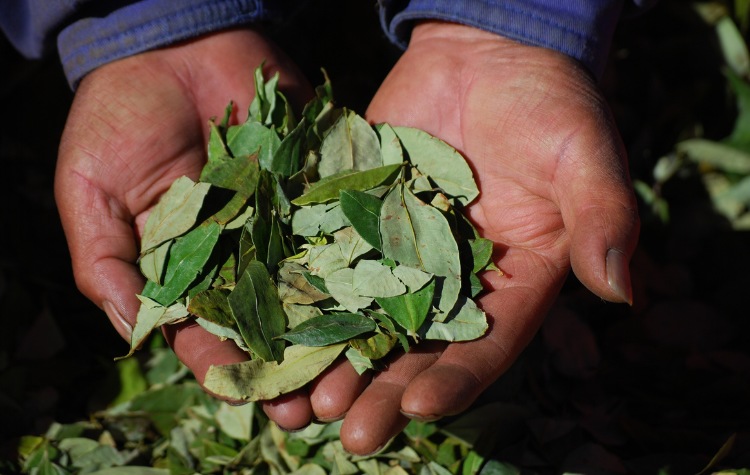
The ancient practice of chewing coca leaves has been a time-honored tradition in the Andean regions for centuries. In its leaf form, Coca (Erythroxylum spp) has been attributed with many medicinal properties, including reduction of hunger, increased stamina and endurance, as an aid to digestion, as a mild stimulant, and as a treatment for altitude sickness.
It is also used in ceremonies and divination in the ancient religions of the Quechua and Aymara speaking peoples of the Andes, and is highly revered as a sacred plant with special powers.
Coca leaves have been chewed for at least 1400 years, and many historians think that the practice is even older than the records show. The evidence of this is the fact that mummies have been discovered with a supply of the leaves for use in the underworld. Other artifacts, including pottery with depictions of coca chewers, have also been found that seem to support this claim.
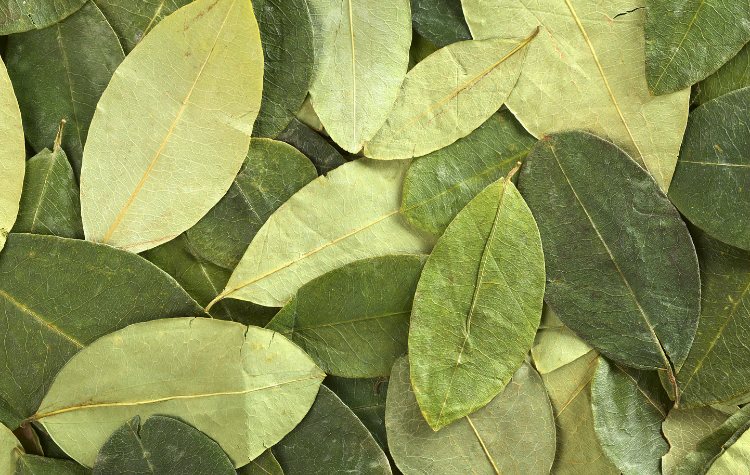
The practice of chewing coca was current when the Incas came into power. Under their rule, its previously indiscriminate use became restricted to the upper classes and noblemen in the late 15th century. The Conquistadors at first forbade its use, and later changed their minds when they witnessed its positive effects on the stamina of workers, who worked harder and consumed less under its influence. Philip II noted it as essential to the well-being of Andean native workers, but wanted its use as a religious tool eradicated. Its employment in ceremonies and rituals, as well as the practice of chewing it for stamina and endurance, continues to this day.
Coca is chewed with a basifying substance, often made from burnt quinoa leaves, called an ilipta. This helps to release the alkaloids in the bundle of leaves, which is stuck into the cheek, called an acullico. The leaves are kept in a chuspa, or woven pouch, that is carried on the body.
Among its plethora of uses, are: as an anesthetic to diminish the discomfort of rheumatism; on wounds, fractures and sores; during childbirth to relieve pain and to stop bleeding; as a digestive aid; to heal ulcers, asthma and malaria; and as an aid to longevity. The leaves are rich in vitamins, minerals, and many other nutrients.
Reputation & Commercial Uses
Coca use is widespread and is completely legal when used in leaf form in the countries of its origin. It can be chewed, made into a tea (called maté de coca) and is also used in candies and other products, such as granola bars and cookies. It’s even made into an herbal liqueur. Most of these products can be found in bodegas and/or supermarkets.
The Coca Cola Company originally used cocaine, the addictive drug synthesized from the coca leaf, in their beverage formula; this was later stopped as coca developed a scandalous reputation and the use of cocaine was declared illegal. They continue to use a non-narcotic extract from the coca plant in their products. The use of coca is illegal in most western countries, since no distinction is recognized between the use of the plant in its natural state and the harmful products that are refined from it. This is irrespective of the fact that coca has long been considered a useful and beneficial plant that has been employed by the Andean people for centuries.
If the history of the coca plant interests you and Cusco is on your list of travel destinations, ask your Kuoda Travel Designer to include a segment in your Peru personalized itinerary for you to witness and even participate in a traditional Andean ceremony. Another option is a stop at the Museo de Plantas Sagradas (Museum of Sacred Plants) located at Calle Santa Teresa 351 in Cusco, to learn more about the Coca Leaf, and its tradition as one of Peru’s most sacred and beneficial plants.
A Foodie’s Guide To Peruvian Fusion Cuisine in Lima
It’s no surprise that Peru is famous for its cuisine, recognized all over the world - delicious dishes like ...
Read PostEat and Drink Your Way Through 10 Days in Argentina’s Wine Country
From the sizzling parilla grills to the sun-kissed vineyards of Mendoza, travel to Argentina’s wine country ...
Read PostThe Best Places To Try Asado In Argentina on Your Foodie Trip To South America
When you travel to Argentina, remember that dining is not just a meal; it's a celebration of life, culture, an...
Read Post

 Call
Call 









